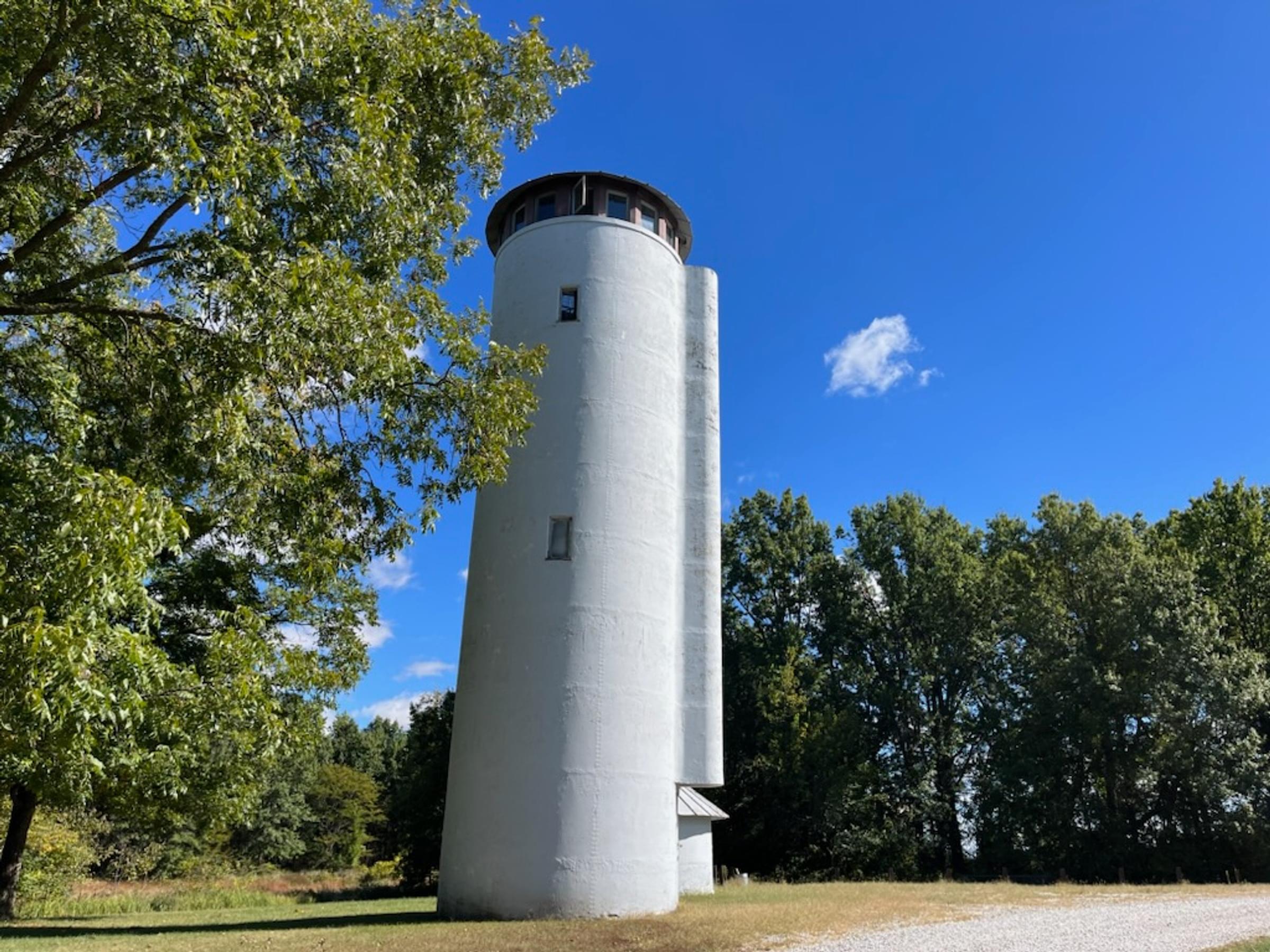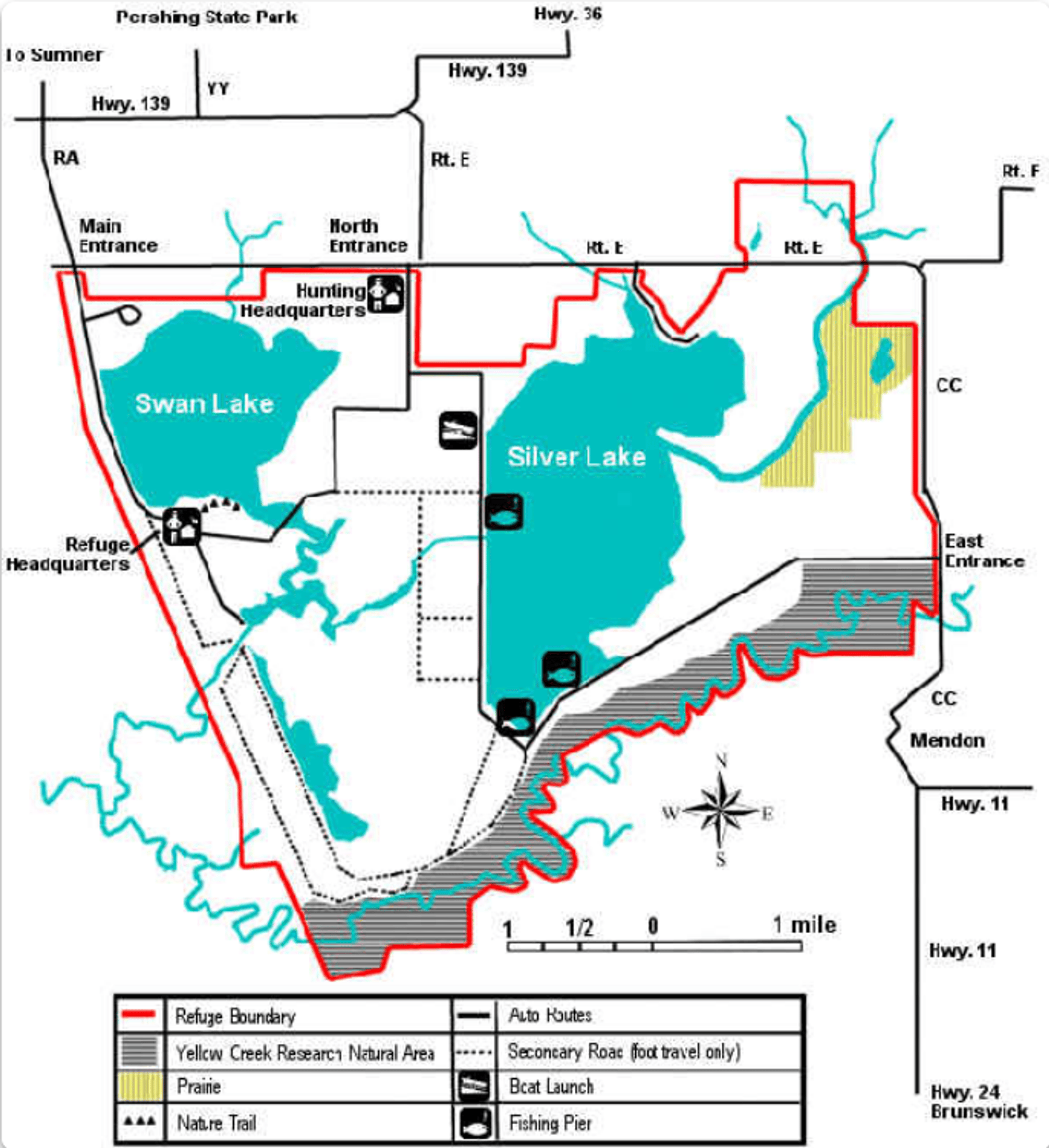Swan Lake NWR

Swan Lake NWR
Cunningham, Missouri 64681
Swan Lake National Wildlife Refuge Official WebsiteSwan Lake National Wildlife Refuge maps
Tips for Birding
When submitting eBird observations at Swan Lake National Wildlife Refuge, it is most helpful to start a new checklist for each hotspot in the refuge. Use the general hotspot when you have a checklist that includes multiple locations or if no other hotspot or personal location is appropriate for your sightings.
Huge area that has much good habitat throughout the seasons. There are fields in the central portion that can normally have good shorebird habitat in both spring and fall. But this area(Swan Lake NWR) is most important of course for its large numbers of migrating and wintering waterfowl. Over the past few years the number of overwintering and migrating Trumpeter Swans here has increased immensely. During the best viewing time for waterfowl, the majority of the area is closed since it is a major waterfowl refuge and a very popular hunting area. But there are still hundreds of swans and thousands of different species of ducks that can be seen in the pool by the visitor center which is open during the winter. When the whole area is open during Spring, Summer and Fall there is much habitat to be seen. There is always a lot of water and wetland habitats around the gravel roads which are easy to navigate. The main silver lake on the east side has other bodies of water surrounding it which can house many different species of wetland birds. There are multiple different entrances which all are interconnected. The western entrance which is by the visitor center has a very good wetland area which has large numbers of waterfowl in the spring fall and winter and large numbers of long-legged waders. The northern entrance leads to both the best shorebird fields to the west of the entrance and to the east it leads right to silver lake. The eastern entrance takes more of a back road through some very wet lowland forrest and then eventually leads to silver lake again.
Birds of Interest
During the winter huge numbers of Trumpeter Swans along with some Tundra swans possible, along with thousands of ducks and geese which migrate through and many of these are winter residents. During Spring and Fall depending on habitat and water levels that shore-birding can be very good and a majority of the species that have been seen in Missouri have been seen here. This is a also a very major hotspot for long legged waders and rails in the summer. Very large numbers of egrets and herons breed here. There are a couple small forested trails which can have some migrating warbler species but nothing too extensive. Some number of gulls can be seen here in winter but there are much better areas for them nearby.
About this Location
Good area to see a lot of birds in all seasons but is most popular in the fall and winter when waterfowl and gulls can be seen. But it is a major hub for shorebirds as well. Should be careful when attempting to bird here in the fall and winter and make sure to stay in open areas.
About Swan Lake National Wildlife Refuge
See all hotspots at Swan Lake National Wildlife Refuge
Swan Lake National Wildlife Refuge was established in 1937 for the purpose of providing habitat, a sanctuary, and breeding grounds for migratory birds and other wildlife. The refuge is currently 10,795 acres and focuses on wetland habitat management. The refuge is also managed for other migratory birds, including waterfowl, geese, shorebirds, and neo-tropical migrating species of birds. Swan Lake National Wildlife Refuge is designated as an Important Bird Area for Missouri.
Swan Lake National Wildlife Refuge offers a number of opportunities for visitors to reconnect with nature. The wildlife drive, open seasonally, observation tower, and nature trail offer views of wildlife and the habitats on the refuge, as well as access to recreation sites such as fishing platforms. Fishing and hunting, as well as special events and programs, are also available during certain seasons.
Notable Trails
One small trail by the visitor center.
Features
Roadside viewing
Restrooms on site
Wheelchair accessible trail
Entrance fee
Content from Swan Lake National Wildlife Refuge Official Website and Jacob Tsikoyak
Last updated October 8, 2023
